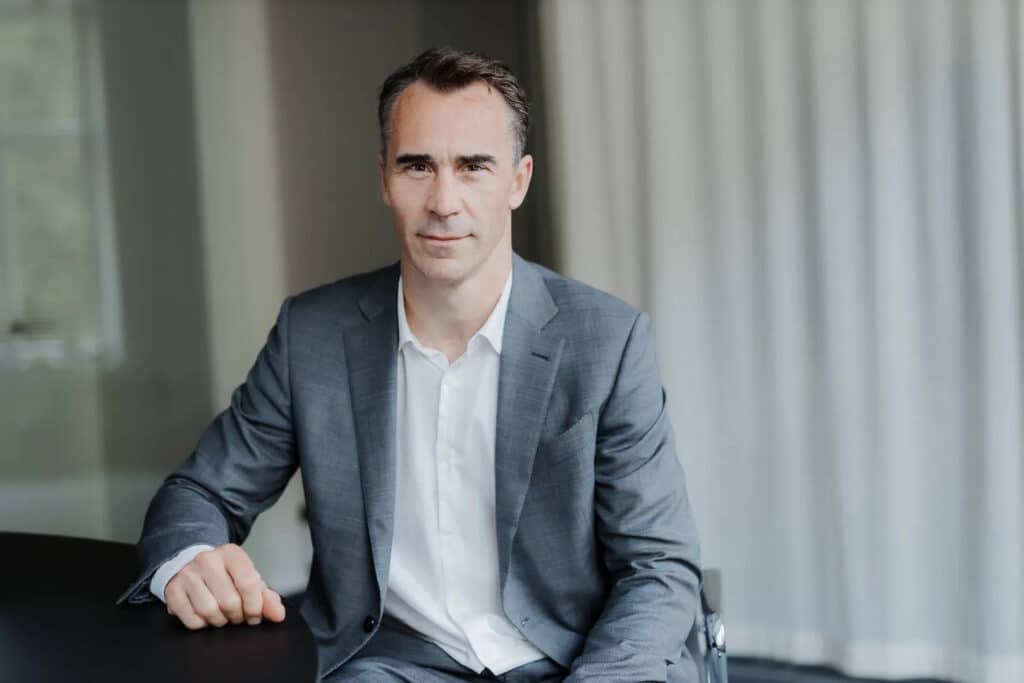Several banks and pension giants still have ESG rules that in practice exclude defense stocks. But new figures reveals that something is happening in Europe. Defense is moving from exclusion to mainstream portfolios. Now, institutions are starting to align sustainability with the geopolitical reality of today.
For years, the defense industry has been grouped together with sectors like tobacco or fossil fuels from an ethical standpoint. Several pension funds and banks have ESG policies that block such investments, even though these companies are transparent, sustainable, and fully compliant with the law. The result is that capital fails to reach the firms that strengthen Europe’s security and resilience.
”Most senior decision-makers understand, given the geopolitical situation, why we need to change our view of European security. But that does not mean that the message filters down to the people who implement it. I still sense anxiety about whether investing in defense companies is the right thing to do, and whether it can truly be justified from an ESG perspective,” says Karl Engelbrektson, former Chief of the Swedish Army and a key figure in Sweden’s early cooperation with NATO.

Change has been slow, despite growing awareness. But Joakim Agerback, portfolio manager of Global Security Fund at Finserve has noticed a change in 2025.
“We see a clear shift in attitude. There is now an understanding that European security must be built by European countries, and that we need to expand our defense industry to safeguard it. Most people understand that this requires investment,” he says.
“We see a clear shift in attitude. There is now an understanding that European security must be built by European countries, and that we need to expand our defense industry to safeguard it.”
Joakim Agerback, portfolio manager of Global Security Fund at Finserve.
New data from Morningstar Sustainalytics shows a clear indicator of a real change in the sector. European sustainability-labelled funds have sharply increased their exposure to defense since 2022, from 0.6 percent to 2.5 percent among active funds. Today more than half of these funds hold positions in the defense sector, up from one-third three years ago. What was once seen as a moral dilemma is now regarded as a strategic necessity.

In Sweden, the powerful national pension funds have acknowledged that the defense sector is essential and needs investment, but remains hesitant due to the precautionary principle.
“If the state’s own funds cannot take a stand or exclude defense companies that the Swedish state itself buys from and approves in procurement, then who will?,” says Joakim Agerback.
Gustaf Hagerud is the new CEO of Finserve. He brings experience from Alecta and Sweden’s governmental funds AP1 and AP3, where he was Head of Asset Management and Deputy CEO.
“Once the large institutions accept that defence contributes to the long-term wellbeing of their members, the question shifts from ‘should we invest’ to ‘how should we invest’. And when that shift happens, capital moves quickly,” Gustaf Hagerud says.
Client demand is a key driver of change. Returns are another. Defense-related stocks have performed strongly, driven by heightened security threats and NATO’s new defense-spending targets.
Few have witnessed the changing attitude toward defense investing as clearly as Stefan Sudra, Head of Fund Insurance at Futur Partners. In April 2025, the Global Security Fund joined Futur’s offering, opening access to 3.3 million Swedish pension savers.
“Of all the funds we’ve launched on the platform, we’ve never seen growth as strong as this one. In just six months, it has attracted around 800 million SEK. That says a lot about the level of interest,” Stefan Sudra says.

Investor appetite and available capital are both there, from institutions and individuals alike. His six-year-old fund now manages over SEK 7.5 billion (EUR 682 million) in assets, up from SEK 4.7 billion (EUR 428 million) in June.
The largest players have been slow to adapt policies and frameworks that allow them to invest in or finance defense. Many remain hesitant to take a clear stance. Most investors now accept conventional defense systems, drawing the line only where civilian harm is disproportionate. Finserve applies the same distinction.
“There is still unease about whether defense stocks are truly acceptable, and whether they can be defended from an ESG perspective. So even though most senior leaders understand the geopolitical logic, it is far from certain that the policy will be implemented by those following internal rules,” says Karl Engelbrektson.
”There is still unease about whether defense stocks are truly acceptable, and whether they can be defended from an ESG perspective.”
Karl Engelbrektson
During the past 12 months, Finserve has worked actively with financial institutions to explain how defense can be integrated into sustainable investment strategies. The timing of its expansion into Germany, France, and Spain coincides with a new phase of European rearmament, as Poland applies for EUR 45 billion in EU funding and Germany commits EUR 500 billion to strengthen its military capacity.
“I think most people now understand that a strong defense isn’t the opposite of sustainability. It is a prerequisite for everything else to work.”
Stefan Sudra
“The EU is already adapting. And ESG frameworks and defense strategies are beginning to reflect this. But from my point of view, sustainability analysts and boards would benefit from more expertise in geopolitics and geoeconomics to grasp the complexity of these issues,” Joakim Agerback says.
Institutional leaders including APG, Allianz, Danske Bank, and BNP Paribas illustrate a broader shift now aligned with the European Investment Bank and the European Commission’s view that defense and sustainability can coexist.
“I think most people now understand that a strong defense isn’t the opposite of sustainability. It is a prerequisite for everything else to work,” says Stefan Sudra.
